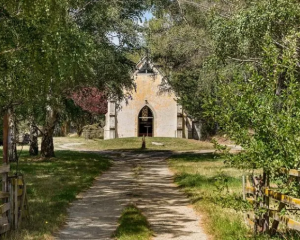
But today, New Zealand's wetlands have been shrunk to just over 10 per cent of their historical extent – and an area the equivalent of 14,000 football fields has been lost in the last three decades alone.
Around 90 per cent of these soggy refuges - vital for supporting plant and animal life - have vanished in the face of development.
Home to an abundance of species like shorebirds, eels, whitebait, mangroves and kahikatea, our wetlands once stretched across more than 2.5 million ha of countryside - that had now dwindled to less than 250,000ha, new research shows.
The study, published in the New Zealand Journal of Ecology, and carried out as part of an MBIE-funded programme, drew on satellite images to obtain an updated stocktake of the country's wetlands.
"The total area of wetlands in New Zealand is now given as 249,214 ha, which is 10.08 per cent of the historical extent," said lead author Dr John Dymond, of Manaaki Whenua-Landcare Research.
"The most surprising result is that loss is still continuing, even though most wetlands are protected in environmental regulations, and even though we have already lost over 90 per cent of historic wetlands."
The research found that, between 1996 and 2018, just under 6000ha of wetland disappeared.
"This is two per cent of the remaining wetlands," said Dymond, who added that the specific drivers for the recent loss were still to be formally assessed.
Rare and threatened species that relied on our remaining wetlands include the bittern or matuku, and the Canterbury mudfish.
The Corybas carsei, or swamp helmet orchid, now only had one population remaining, at the Whangamarino Wetlands near Te Kauwhata in northern Waikato.
Yet, despite wetlands' importance to our environment, New Zealand currently had only seven of 2300 listed worldwide under the Ramsar Convention on Wetlands of International Importance.
"Every single remaining wetland is important for birds and fish, and for us - they reduce the effects of climate change through cooling, flood protection, drought reduction and the list goes on," Forest and Bird freshwater conservation advocate Annabeth Cohen said.
"This research shows that there is still a mountain of work to do to map the full extent of wetlands in New Zealand."
Earlier this year, the National Wetland Trust released its own report exploring the state of play, finding that 5400ha of freshwater wetland vegetation, along with almost 140ha of saline wetland vegetation, was destroyed through human actions.
About 90 percent was converted to grassland for grazing, the trust reported, and the greatest period of loss occurred between 2008 and 2012 – an average of 370ha each year.
The regions that took the biggest hits were Southland, Northland, Waikato and the West Coast, while Gisborne lost the greatest proportion – 15 per cent - of its 1996 extent of freshwater wetland vegetation.
The trust pointed out that, while most councils had appropriate policy objectives, and all regional plans had wetland drainage rules, these varied in strength and some failed to control wetland vegetation clearance.
"These factors combined to create a loophole for wetland loss – vegetation could be cleared as a permitted activity, stripping the site of its significance and enabling drainage without the need for any resource consents," the trust reported.
"Lack of enforcement appears to be a major contributing factor, with an apparently low risk of penalty for illegal drainage, and few 'example-setting' prosecutions to encourage compliance with rules and consent conditions."
Cohen argued not enough was to protect remaining areas, and her group was calling on the Government to establish a national restoration plan.
Forest and Bird was thankful, however, that new freshwater regulations would see wetland areas extensively mapped so they could be better protected.
"This work can't come fast enough."
But how recently-introduced Government-set "bottom line" rules formally define wetlands have already drawn confusion and frustration from land users.
As he released the first of three pieces of legislation which will replace the Resource Management Act this week, Environment Minister David Parker said those freshwater rules would need to be fixed.













